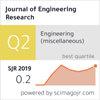利用基于特征重要性得分的特征选择来检测安卓恶意软件的机器学习方法
IF 2.2
4区 工程技术
Q3 ENGINEERING, MULTIDISCIPLINARY
引用次数: 0
摘要
随着技术的快速发展和在线服务的使用,恶意软件带来的危害正在激增。具体来说,由于智能手机的普及,针对Android设备的攻击正在急剧增长。现有研究证实,通过机器学习分类器分析权限,可以识别Android平台上的良性或恶意应用程序。有一些机器学习技术可以创建模型,使用基于权限的属性来检测Android恶意软件。然而,Android恶意软件检测机制的特征选择策略还需要进一步研究。本研究提出了一种基于机器学习的Android恶意软件检测机制,并在多个基于权限的数据集上使用标准机器学习算法对恶意软件进行分类。本研究提出了一种特征选择方法,该方法使用梯度增强计算的特征重要性分数来识别必要的权限。该方法降低了特征向量的维数,减少了模型的训练时间。我们还比较了分类器与完整特征集和简化特征集的性能。检查结果,我们注意到该算法的执行时间对所有数据集都有显着改善,而精度损失可以忽略不计。本文章由计算机程序翻译,如有差异,请以英文原文为准。
Machine learning approach to detect android malware using feature-selection based on feature importance score
The hazards posed by malware are proliferating along with technology’s rapid advancement and the use of online services. Specifically, attacks on Android devices are growing enormously because of the boost in the popularity of Smartphones. Existing research confirms that identifying benign or malware applications on the Android platform is possible by analysing the permissions through the machine-learning classifier. There are machine-learning techniques that create models to detect Android malware using permission-based attributes. However, further research is still needed to develop effective feature selection strategies for malware detection mechanisms in Android. In this study, a machine-learning-based Android malware detection mechanism is proposed, and standard machine-learning algorithms are used on multiple permission-based datasets to classify malware. This study suggests a feature selection method that uses the feature importance score computed using Gradient boosting to identify the essential permissions. The proposed methodology decreases the feature vector’s dimension, reducing the model’s training time. We also compare the classifier’s performance with the complete feature set and with the reduced feature set. Examining the results, we notice that the algorithm’s execution time improved significantly for all datasets with negligible loss in accuracy.
求助全文
通过发布文献求助,成功后即可免费获取论文全文。
去求助
来源期刊

Journal of Engineering Research
ENGINEERING, MULTIDISCIPLINARY-
CiteScore
1.60
自引率
10.00%
发文量
181
审稿时长
20 weeks
期刊介绍:
Journal of Engineering Research (JER) is a international, peer reviewed journal which publishes full length original research papers, reviews, case studies related to all areas of Engineering such as: Civil, Mechanical, Industrial, Electrical, Computer, Chemical, Petroleum, Aerospace, Architectural, Biomedical, Coastal, Environmental, Marine & Ocean, Metallurgical & Materials, software, Surveying, Systems and Manufacturing Engineering. In particular, JER focuses on innovative approaches and methods that contribute to solving the environmental and manufacturing problems, which exist primarily in the Arabian Gulf region and the Middle East countries. Kuwait University used to publish the Journal "Kuwait Journal of Science and Engineering" (ISSN: 1024-8684), which included Science and Engineering articles since 1974. In 2011 the decision was taken to split KJSE into two independent Journals - "Journal of Engineering Research "(JER) and "Kuwait Journal of Science" (KJS).
 求助内容:
求助内容: 应助结果提醒方式:
应助结果提醒方式:


